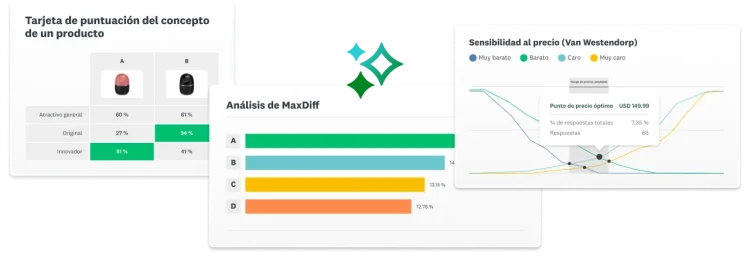
SOLUCIONES DE INVESTIGACIÓN DE MERCADO
Obtén percepciones impulsadas por inteligencia artificial con nuestras soluciones de investigación de mercado ágil
Toma mejores decisiones con percepciones del mercado, el sector y los compradores. Crea una cuenta gratis y obtén retroalimentación al instante.





SurveyMonkey simplifica y agiliza la investigación de mercado
Decide quién quieres que responda tu encuesta
Elige a tu público para obtener una estimación. Le enviaremos tu encuesta a personas de nuestro panel mundial que coincidan con los criterios que solicitaste. Desde consumidores hasta profesionales, conéctate con más de 335 millones de personas en más de 130 países.
Deja que la IA haga el trabajo pesado por ti
SurveyMonkey utiliza IA para agilizar y favorecer cada etapa de tu investigación, desde guiar el proceso de creación de la encuesta hasta detectar tendencias y patrones en tus datos.
Obtén percepciones con rapidez y toma mejores decisiones
Nuestra intuitiva plataforma simplifica el proceso para recopilar y analizar datos a escala. Los altos estándares de calidad para los datos garantizan que tus resultados sean precisos. Además, con la generación de informes personalizados y las exportaciones, puedes compartir percepciones en formatos listos para presentaciones.
SOLUCIONES CREADAS POR EXPERTOS
Comprende a tu público objetivo, mantén el liderazgo en el mercado y haz crecer tu marca
Descubre nuevas oportunidades y mantente competitivo en un mercado en constante evolución
Aprende sobre las preferencias, hábitos y comportamientos de compra de los consumidores.
Optimización de precios (Van Westendorp)
Encuentra el nivel y el rango óptimos de precios para tu producto o servicio.
Toma mejores decisiones respecto a los productos y mensajes de marketing.
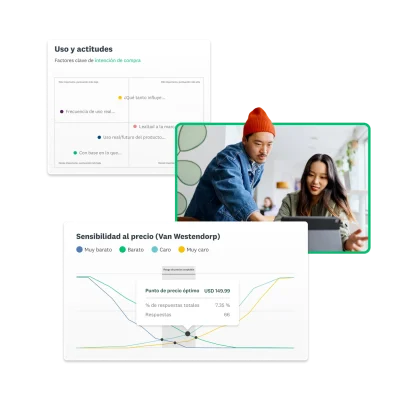
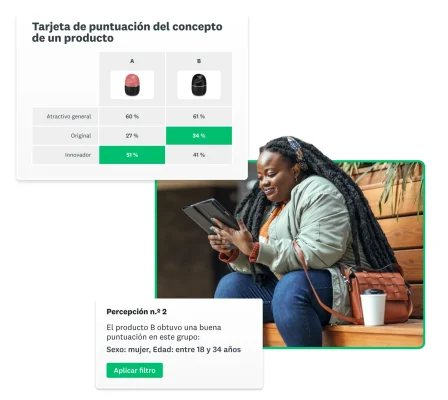
Pon a prueba tus ideas antes de invertir y obtén de inmediato la aprobación de colaboradores clave
Prueba ideas de productos y compáralas con los puntos de referencia de la industria.
Prueba y prioriza rápidamente productos o ideas creativas en etapas iniciales con tu público objetivo.
Prueba diferentes nombres para tu marca, producto o servicio.
Prueba del diseño del logotipo
Descubre el diseño ideal para el logotipo de tu marca o tus productos.
Obtén opiniones de tu público objetivo sobre los diseños para el empaque de tu producto.
Lanza campañas de marketing exitosas y entra al mercado con confianza
Prueba tus campañas de marketing y publicidad antes de lanzarlas.
Prueba de mensaje y afirmaciones
Consigue opiniones sobre mensajes, eslóganes, textos publicitarios de productos y más.
Descubre cómo tus videos tienen un impacto en tu público objetivo.
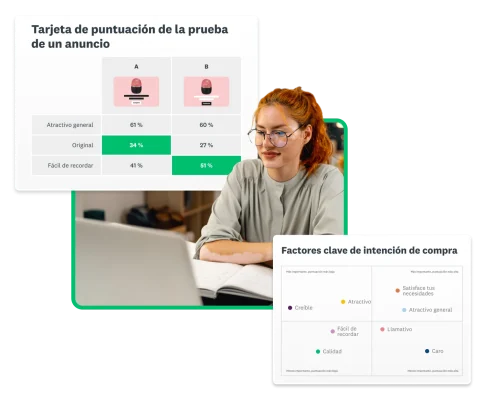

Obtén respuestas en minutos con SurveyMonkey Audience
Aprovecha las percepciones confiables de más de 335 millones de personas en más de 130 países, con más de 200 opciones de focalización exclusivas. Limpiamos tus datos automáticamente y eliminamos las respuestas de mala calidad para que puedas tomar decisiones basadas en percepciones confiables y en tiempo real.
Descubre más recursos para mejorar tu investigación
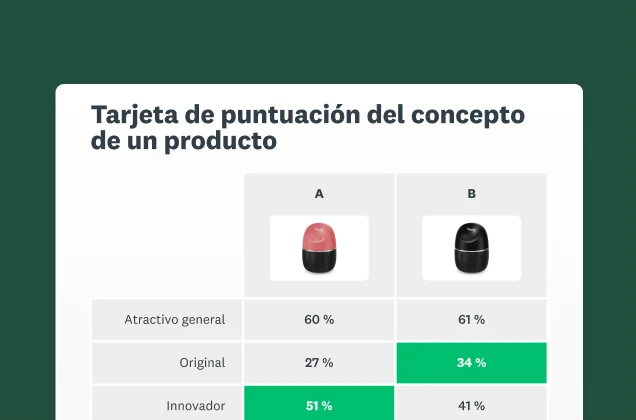
Las 5 etapas del ciclo de vida del producto
Pon a prueba tus productos antes de que ingresen al mercado con la solución Prueba de conceptos de SurveyMonkey.

Qué sucede después de lanzar un proyecto de SurveyMonkey Audience
Averigua qué esperar una vez que tu proyecto esté activo y recopile respuestas.

Las novedades de SurveyMonkey
Obtén información acerca de las últimas actualizaciones de productos y lanzamientos de funciones. Crea encuestas y formularios para obtener comentarios rápidos y percepciones contundentes.

Cómo se pone a prueba la calidad de nuestro panel de Audience
Descubre cómo nuestro equipo de investigación se asegura de que tus encuestas reciban respuestas razonadas y coherentes.
Mantente al frente de la competencia
Usa nuestras soluciones de investigación de mercado creadas por expertos para salir al mercado con confianza